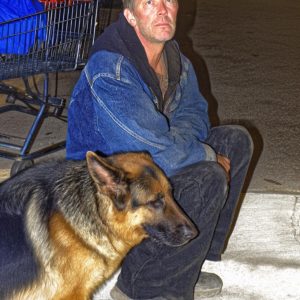Paragraph 1
Brookhaven Village, a quiet neighborhood known for its calm streets, was suddenly thrown into tension as flashing lights and sirens pierced the air. Residents paused, their curiosity tinged with fear, as word spread of an incident involving a young child. The neighborhood braced itself for tragedy, imagining the worst. In the midst of this anxious scene, the home at the center of attention was quietly writing a different story — one of courage, quick thinking, and love stepping forward when fear threatened to overwhelm. The scene was a reminder that even in ordinary settings, extraordinary acts can unfold without warning.
Paragraph 2
Inside the modest home, paramedics arrived to find a five-year-old boy struggling for life, his breathing irregular and fragile. Standing over him was his grandmother, her hands trembling but moving with deliberate purpose. She had noticed the unusual silence, the abandoned toy mid-play, and the bluish tint on her grandson’s lips. Instinct and memory collided as she recalled a CPR course she had taken years earlier, now suddenly vital. Despite her fear and shaking hands, she began administering life-saving care, her actions a blend of learned skill and maternal urgency. Her courage transformed a moment of potential tragedy into a battle for survival.
Paragraph 3
By the time emergency responders reached the child, the grandmother had already made a critical difference. The boy’s chest rose with faint, rhythmic breaths, evidence of the effectiveness of her intervention. Paramedics moved quickly, stabilizing him for transport, but the initial revival had come entirely through her action. Standing nearby, she was pale, sweat and tears mingling on her face, emotions swinging between disbelief and relief. The quiet heroism of her presence shifted the moment from fear to hope, creating a space where life clung to life. Observing neighbors were struck not by tragedy but by the miraculous impact of calm, decisive action under pressure.
Paragraph 4
Officials later described the incident as “fortunate timing,” emphasizing the serendipitous convergence of skill and presence. Yet those who knew the grandmother recognized the depth of intentional courage, seeing it as something more than luck. The story spread through the village, capturing attention not because of potential loss, but because of the deliberate choice to act in the face of panic. It highlighted the power of knowledge retained, practiced, and applied when it mattered most. For the community, the moment became a lesson in vigilance, preparation, and the unseen value of skills learned long before they were needed.
Paragraph 5
In the aftermath, the boy recovered under medical care, and the grandmother’s bravery became emblematic of quiet heroism. Her actions demonstrated how love can intersect with learned skill to create outcomes that defy expectation. The story resonated deeply in Brookhaven Village, inspiring neighbors and officials alike. It became a narrative about the transformative impact of being present, the importance of readiness, and the ability of ordinary individuals to influence extraordinary outcomes. Through her intervention, the grandmother rewrote the script of what could have been tragedy, shaping a tale of hope, courage, and human connection.
Paragraph 6
Ultimately, the event in Brookhaven Village was remembered not as a near-tragedy narrowly avoided but as a testament to the sacred interplay between fear and faith. The grandmother’s decisive, loving response underscored the power of knowledge, preparation, and emotional fortitude in life-or-death moments. Neighbors carried the story forward as a reminder that ordinary people, in ordinary places, can perform acts of extraordinary significance. In the quiet space between panic and action, something miraculous can occur, reminding everyone that courage guided by love can transform the most dire situations into lasting lessons of hope and resilience.





